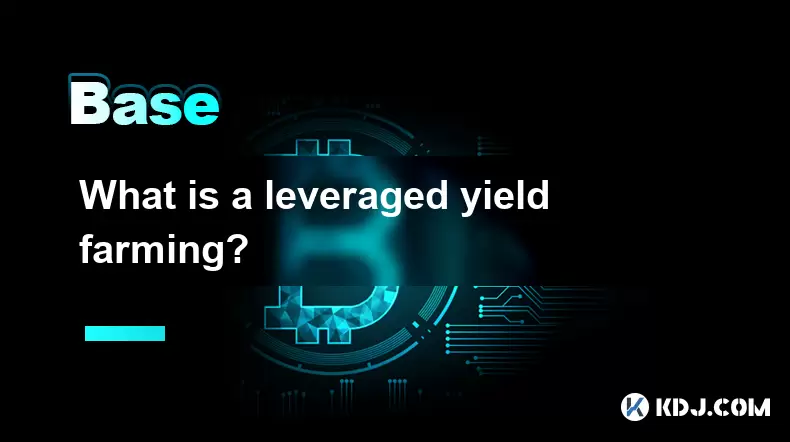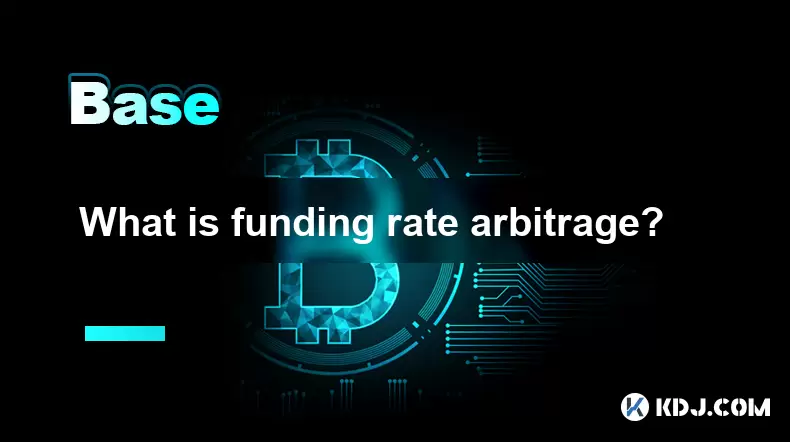-
 Bitcoin
Bitcoin $109,060.5091
-0.60% -
 Ethereum
Ethereum $2,554.0291
-1.47% -
 Tether USDt
Tether USDt $1.0003
0.00% -
 XRP
XRP $2.2391
-2.33% -
 BNB
BNB $659.7691
-0.31% -
 Solana
Solana $150.5458
-2.56% -
 USDC
USDC $1.0000
0.00% -
 TRON
TRON $0.2873
1.05% -
 Dogecoin
Dogecoin $0.1669
-3.75% -
 Cardano
Cardano $0.5827
-3.21% -
 Hyperliquid
Hyperliquid $38.9857
-3.92% -
 Sui
Sui $2.9281
-3.02% -
 Bitcoin Cash
Bitcoin Cash $482.7177
-4.36% -
 Chainlink
Chainlink $13.3876
-2.65% -
 UNUS SED LEO
UNUS SED LEO $9.0546
0.46% -
 Avalanche
Avalanche $18.1281
-3.21% -
 Stellar
Stellar $0.2404
-1.65% -
 Toncoin
Toncoin $2.8065
-2.82% -
 Shiba Inu
Shiba Inu $0.0...01158
-2.97% -
 Litecoin
Litecoin $88.4252
-2.90% -
 Hedera
Hedera $0.1559
-2.34% -
 Monero
Monero $319.4730
-2.17% -
 Polkadot
Polkadot $3.4421
-4.06% -
 Dai
Dai $1.0000
0.00% -
 Ethena USDe
Ethena USDe $1.0002
0.01% -
 Bitget Token
Bitget Token $4.4632
-2.78% -
 Uniswap
Uniswap $7.3746
-3.91% -
 Pepe
Pepe $0.0...09800
-6.01% -
 Aave
Aave $269.6237
-3.51% -
 Pi
Pi $0.4834
-3.35%
What is a leveraged yield farming?
Leveraged yield farming uses borrowed funds to boost liquidity provision in DeFi, increasing both potential rewards and risks like liquidation and impermanent loss.
Jul 04, 2025 at 09:36 am

Understanding Leveraged Yield Farming
Leveraged yield farming is a more advanced form of yield farming, which itself is a popular method in the decentralized finance (DeFi) ecosystem to earn returns by providing liquidity to various protocols. In traditional yield farming, users deposit tokens into a DeFi platform and earn rewards in return, often in the form of governance tokens or interest.
However, with leveraged yield farming, users amplify their potential returns by borrowing additional funds from lending platforms and using them alongside their own capital. This strategy allows for higher liquidity provision and thus potentially larger rewards, but it also increases risk significantly due to the borrowed component.
The Mechanics Behind Leveraged Yield Farming
To understand how leveraged yield farming works, consider this simplified scenario:
- A user deposits 1 ETH as collateral on a DeFi lending platform.
- The platform allows them to borrow up to 70% of that value, say 0.7 ETH.
- They then combine their original 1 ETH and the borrowed 0.7 ETH to provide liquidity to a yield farming pool.
- The total liquidity provided becomes 1.7 ETH, increasing their share in the pool and hence their earnings.
This process involves multiple steps:
- Depositing assets as collateral
- Borrowing against the deposited assets
- Using both native and borrowed funds for liquidity provision
- Earning rewards based on the total liquidity contributed
Each of these steps requires precise execution and understanding of the underlying smart contracts and protocols involved.
Risks Involved in Leveraged Yield Farming
While leveraged yield farming can offer higher returns, it also comes with elevated risks:
- Liquidation risk: If the value of the collateral drops below a certain threshold, the position can be liquidated.
- Impermanent loss: When providing liquidity, price divergence between the two assets in the pair can cause losses.
- Smart contract vulnerabilities: Bugs or exploits in the code can lead to fund loss.
- Market volatility: Sudden price swings can trigger margin calls or reduce the value of rewards.
These factors make leveraged yield farming unsuitable for novice investors or those who cannot tolerate high levels of financial risk.
Popular Platforms for Leveraged Yield Farming
Several DeFi platforms enable leveraged yield farming through integrated lending and liquidity pools:
- Aave: Users can supply assets and borrow against them, then use both to farm yields on other platforms.
- Compound Finance: Offers similar features where users can generate leveraged positions.
- Beefy Finance: Provides auto-compounding vaults that may integrate leverage strategies.
- Alpha Homora: Specifically designed for leveraged yield farming on Uniswap and SushiSwap.
When interacting with these platforms, users must carefully check:
- Collateralization ratios
- Interest rates for borrowed assets
- Reward token emissions and value
- Security audits conducted on the platform
Each decision point directly affects the profitability and safety of the leveraged yield farming strategy.
Step-by-Step Guide to Leveraged Yield Farming
If you're considering engaging in leveraged yield farming, follow this detailed process:
- Choose a reliable DeFi platform that supports both lending and liquidity provision
- Connect your wallet (e.g., MetaMask) to the platform
- Deposit stablecoins or ETH/BNB/DOT as collateral
- Borrow an asset against your deposit, ensuring you remain above the liquidation threshold
- Navigate to a yield farming pool that accepts the combination of your native and borrowed assets
- Supply liquidity to the selected pool
- Monitor your position regularly, checking for impermanent loss and reward accruals
- Withdraw or adjust your position if market conditions change
Every step must be executed with caution. Mistakes like incorrect slippage settings, wrong token pairs, or failing to track debt obligations can result in significant losses.
How to Calculate Potential Returns in Leveraged Yield Farming
Calculating the expected yield from leveraged yield farming involves several variables:
- APY of the farming pool
- Cost of borrowing (interest rate)
- Amount of leverage used
- Duration of the investment
- Gas fees and transaction costs
Use tools such as:
- APY calculators specific to DeFi
- Spreadsheets to model different scenarios
- Real-time dashboards like Zapper or DeFi Pulse
For example, if the base APY is 50%, but the borrowing cost is 10%, and you apply 2x leverage, the net effective APY could be around 90%. However, this is theoretical and does not account for compounding frequency or market fluctuations.
Frequently Asked Questions
Q: Is leveraged yield farming legal?
A: Yes, leveraged yield farming is legal in most jurisdictions, but regulatory status varies by country. Always ensure compliance with local laws before participating.
Q: Can I lose more than my initial investment in leveraged yield farming?
A: Yes, especially if the value of your collateral drops sharply, leading to liquidation. You may end up owing more than your initial deposit due to debt accrued from borrowed assets.
Q: Are there insurance options for leveraged yield farming?
A: Some DeFi insurance platforms like Nexus Mutual or InsurAce offer coverage for smart contract failures, but they do not cover losses from market volatility or poor investment decisions.
Q: How do gas fees affect leveraged yield farming?
A: High gas fees on networks like Ethereum can eat into profits, especially when frequent rebalancing or withdrawals are needed. Consider using layer-2 solutions or alternative blockchains like Binance Smart Chain or Avalanche to minimize costs.
Disclaimer:info@kdj.com
The information provided is not trading advice. kdj.com does not assume any responsibility for any investments made based on the information provided in this article. Cryptocurrencies are highly volatile and it is highly recommended that you invest with caution after thorough research!
If you believe that the content used on this website infringes your copyright, please contact us immediately (info@kdj.com) and we will delete it promptly.
- Bitcoin's Pattern Break: Are HODLers the Key to the Next Surge?
- 2025-07-04 18:50:12
- Bitcoin Price, Trump's Bill, and the $150K Dream: A NYC Take
- 2025-07-04 19:50:12
- Ethereum, LILPEPE, and the July Bounce: Will Pepe Steal ETH's Thunder?
- 2025-07-04 19:10:12
- Binance Institutional Loans: Unlocking 4x Leverage and Zero Interest for Whales
- 2025-07-04 19:15:12
- Bitcoin Bull Run: Analysts Eye Peak in Late 2025?
- 2025-07-04 19:20:13
- Pepe Indicators, Bullish Forecast: Can the Meme Coin Rally?
- 2025-07-04 19:25:12
Related knowledge

What is a user-generated content (UGC) NFT platform?
Jul 04,2025 at 01:49pm
Understanding the Concept of a UGC NFT PlatformA user-generated content (UGC) NFT platform is a digital marketplace or ecosystem where users can create, mint, and trade non-fungible tokens (NFTs) that represent ownership of original digital content they produce. Unlike traditional NFT platforms where creators often include professional artists or develo...

What is a token generation event (TGE)?
Jul 04,2025 at 07:14am
Understanding the Basics of a Token Generation Event (TGE)A Token Generation Event (TGE) refers to the process through which a blockchain project creates and distributes its native tokens to investors, participants, or stakeholders. This event is often associated with new cryptocurrency projects launching on platforms like Ethereum, Binance Smart Chain,...

What is a block explorer API?
Jul 04,2025 at 05:07am
Understanding the Role of a Block Explorer APIA block explorer API is a crucial interface that enables developers and users to interact programmatically with blockchain data. Unlike traditional APIs used in web services, a block explorer API specifically provides access to blockchain-related information such as transaction details, wallet balances, bloc...

What is a leveraged yield farming?
Jul 04,2025 at 09:36am
Understanding Leveraged Yield FarmingLeveraged yield farming is a more advanced form of yield farming, which itself is a popular method in the decentralized finance (DeFi) ecosystem to earn returns by providing liquidity to various protocols. In traditional yield farming, users deposit tokens into a DeFi platform and earn rewards in return, often in the...

What is open interest in derivatives?
Jul 03,2025 at 02:49pm
Understanding Open Interest in DerivativesOpen interest is a critical metric used in the cryptocurrency derivatives market, particularly when analyzing futures and options contracts. It represents the total number of outstanding contracts that have not been settled or closed by either party involved. Unlike trading volume, which counts all trades made i...

What is funding rate arbitrage?
Jul 04,2025 at 11:43am
Understanding Funding Rate Arbitrage in the Cryptocurrency MarketFunding rate arbitrage is a trading strategy employed by crypto traders to exploit differences in funding rates across various perpetual futures exchanges. In perpetual contracts, funding rates are periodic payments made between long and short traders depending on whether the price of the ...

What is a user-generated content (UGC) NFT platform?
Jul 04,2025 at 01:49pm
Understanding the Concept of a UGC NFT PlatformA user-generated content (UGC) NFT platform is a digital marketplace or ecosystem where users can create, mint, and trade non-fungible tokens (NFTs) that represent ownership of original digital content they produce. Unlike traditional NFT platforms where creators often include professional artists or develo...

What is a token generation event (TGE)?
Jul 04,2025 at 07:14am
Understanding the Basics of a Token Generation Event (TGE)A Token Generation Event (TGE) refers to the process through which a blockchain project creates and distributes its native tokens to investors, participants, or stakeholders. This event is often associated with new cryptocurrency projects launching on platforms like Ethereum, Binance Smart Chain,...

What is a block explorer API?
Jul 04,2025 at 05:07am
Understanding the Role of a Block Explorer APIA block explorer API is a crucial interface that enables developers and users to interact programmatically with blockchain data. Unlike traditional APIs used in web services, a block explorer API specifically provides access to blockchain-related information such as transaction details, wallet balances, bloc...

What is a leveraged yield farming?
Jul 04,2025 at 09:36am
Understanding Leveraged Yield FarmingLeveraged yield farming is a more advanced form of yield farming, which itself is a popular method in the decentralized finance (DeFi) ecosystem to earn returns by providing liquidity to various protocols. In traditional yield farming, users deposit tokens into a DeFi platform and earn rewards in return, often in the...

What is open interest in derivatives?
Jul 03,2025 at 02:49pm
Understanding Open Interest in DerivativesOpen interest is a critical metric used in the cryptocurrency derivatives market, particularly when analyzing futures and options contracts. It represents the total number of outstanding contracts that have not been settled or closed by either party involved. Unlike trading volume, which counts all trades made i...

What is funding rate arbitrage?
Jul 04,2025 at 11:43am
Understanding Funding Rate Arbitrage in the Cryptocurrency MarketFunding rate arbitrage is a trading strategy employed by crypto traders to exploit differences in funding rates across various perpetual futures exchanges. In perpetual contracts, funding rates are periodic payments made between long and short traders depending on whether the price of the ...
See all articles

























































































